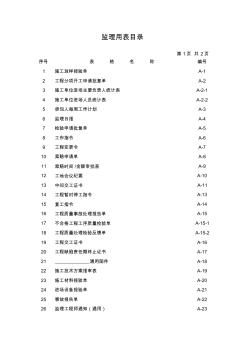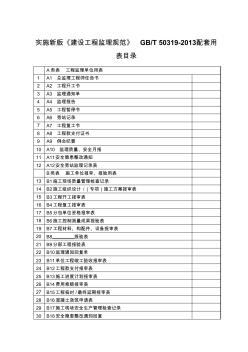Preface xxvii
Acknowledgments xxxiii
Foreword xxxvii
Part 1 Water Reuse: An Introduction 1
1 Water Issues: Current Status and the Role of Water Reclamation and Reuse 3
Working Terminology 4
1-1 Definition of Terms 6
1-2 Principles of Sustainable Water Resources Management 6
The principle of sustainability 7
Working definitions of sustainability 7
Challenges for sustainability 7
Criteria for sustainable water resources management 7
Environmental ethics 13
1-3 Current and Potential Future Global Water Shortages 15
Impact of current and projected world population 15
Potential global water shortages 19
Water scarcity 19
Potential regional water shortages in the continental
United States 20
1-4 The Important Role of Water Reclamation and Reuse 23
Types of water reuse 24
Integrated water resources planning 24
Personnel needs/sustainable engineering 27
Treatment and technology needs 27
Infrastructure and planning issues 28
1-5 Water Reclamation and Reuse and Its Future 30
Implementation hurdles 31
Public support 31
Acceptance varies depending on opportunity and necessity 31
Public water supply from polluted water sources 31
Advances in water reclamation technologies 31
Challenges for water reclamation and reuse 32
Problems and Discussion Topics 32
References 33
2 Water Reuse: Past and Current Practices 37
Working Terminology 38
2-1 Evolution of Water Reclamation and Reuse 39
Historical development prior to 1960 39
Era of water reclamation and reuse in the United States-post-1960 41
2-2 Impact of State and Federal Statutes on Water Reclamation and Reuse 45
The Clean Water Act 45
The Safe Drinking Water Act 46
2-3 Water Reuse——Current Status in the United States 46
Withdrawal of water from surface and groundwater sources 46
Availability and reuse of treated wastewater 46
Milestone water reuse projects and research studies 47
2-4 Water Reuse in California: A Case Study 47
Experience with water reuse 47
Current water reuse status 48
Water reuse policies and recycling regulations 51
Potential future uses of reclaimed water 52
2-5 Water Reuse in Florida: A Case Study 53
Experience with water reuse 54
Current water reuse status 54
Water reuse policies and recycling regulations 56
Potential future uses of reclaimed water 56
2-6 Water Reuse in Other Parts of the World 58
Significant developments worldwide 58
The World Health Organization's water reuse guidelines 59
Water reuse in developing countries 59
2-7 Summary and Lessons Learned 63
Problems and Discussion Topics 65
References 66
Part 2 Health and Environmental Concerns in Water Reuse 71
3 Characteristics of Municipal Wastewater and Related
Health and Environmental Issues 73
Working Terminology 74
3-1 Wastewater in Public Water Supplies-de facto Potable Reuse 77
Presence of treated wastewater in public water supplies 78
Impact of the presence of treated wastewater on public water supplies 78
3-2 Introduction to Waterborne Diseases and Health Issues 78
Important historical events 79
Waterborne disease 80
Etiology of waterborne disease 81
3-3 Waterborne Pathogenic Microorganisms 83
Terminology conventions for organisms 83
Log removal 83
Bacteria 83
Protozoa 87
Helminths 89
Viruses 89
3-4 Indicator Organisms 92
Characteristics of an ideal indicator organism 92
The coliform group bacteria 93
Bacteriophages 93
Other indicator organisms 94
3-5 Occurrence of Microbial Pathogens in Untreated and Treated Wastewater and in the Environment 94 Pathogens in untreated wastewater 94
Pathogens in treated wastewater 97
Pathogens in the environment 102
Survival of pathogenic organisms 102
3-6 Chemical Constituents in Untreated and Treated Wastewater 103
Chemical constituents in untreated wastewater 103
Constituents added through domestic commercial and industrial usage 104
Chemical constituents in treated wastewater 108
Formation of disinfection byproducts(DBPs) 113
Comparison of treated wastewater to natural water 114
Use of surrogate parameters 115
3-7 Emerging Contaminants in Water and Wastewater 117
Endocrine disruptors and pharmaceutically active chemicals 117
Some specific constituents with emerging concern 118
New and reemerging microorganisms 120
3-8 Environmental Issues 120
Effects on soils and plants 121
Effects on surface water and groundwater 121
Effects on ecosystems 121
Effects on development and land use 122
Problems and Discussion Topics 122
References 124
4 Water Reuse Regulations and Guidelines 131
Working Terminology 132
4-l Understanding Regulatory Terminology 134
Standard and criterion 134
Standard versus criterion 134
Regulation 135
Difference between regulations and uidelines 135
Water reclamation and reuse 135
4-2 Development of Standards, Regulations,and Guidelines for Water Reuse 135
Basis for water quality standards 136
Development of water reuse regulations and guidelines 136
The regulatory process 139
4-3 General Regulatory Considerations Related to Water Reclamation and Reuse 139
Constituents and physical properties of concern in wastewater 139
Wastewater treatment and water quality considerations 142
Reclaimed water quality monitoring 145
Storage requirements 146
Reclaimed water application rates 147
Aerosols and windborne sprays 147
4-4 Regulatory Considerations for Specific Water Reuse Applications 149
Agricultural irrigation 149
Landscape irrigation 150
Dual distribution systems and in-building uses 151
Impoundments 152
Industrial uses 153
Other nonpotable uses 153
Groundwater recharge 154
4-5 Regulatory Considerations for Indirect Potable Reuse 155
Use of the most protected water source 155
Influence of the two water acts 155
Concerns for trace chemical constituents and pathogens 156
Assessment of health risks 157
4-6 State Water Reuse Regulations 157
Status of water reuse regulations and guidelines 158
Regulations and guidelines for specific reuse applications 158
Regulatory requirements for nonpotable uses of reclaimed water 165
State regulations for indirect potable reuse 167
4-7 U.S. EPA Guidelines for Water Reuse 169
Disinfection requirements 169
Microbial limits 178
Control measures 178
Recommendations for indirect potable reuse 178
4-8 World Health Organization Guidelines for Water Reuse 179
1989 WHO guidelines for agriculture and aquaculture 180
The Stockholm framework 180
Disability adjusted life years 180
Concept of tolerable (acceptable)risk 181
Tolerable microbial risk in water 181
2006 WHO guidelines for the safe use of astewater in agriculture 182
4-9 Future Directions in Regulations and Guidelines 184
Continuing development of state standards, regulations, and guidelines 184
Technical advances in treatment processes 184
Information needs 184
Problems and Discussion Topics 185
References 187
5 Health Risk Analysis in Water Reuse Applications 191
Working Terminology 192
5-1 Risk Analysis: An Overview 193
Historical development of risk assessment 194
Objectives and applications of human health risk assessment 194
Elements of risk analysis 194
Risk analysis: definitions and concepts 196
5-2 Health Risk Assessment 197
Hazard identification 198
Dose-response assessment 198
Dose-response models 200
Exposure assessment 204
Risk characterization 204
Comparison of human health and ecological risk assessment 205
5-3 Risk Management 205
5-4 Risk Communication 206
5-5 Tools and Methods Used in Risk Assessment 207
Concepts from public health 207
Concepts from epidemiology 208
Concepts from toxicology 209
National toxicology program cancer bioassay 213
Ecotoxicology: environmental effects 214
5-6 Chemical Risk Assessment 215
Safety and risk determination in regulation of chemical agents 215
Risks from potential nonthreshold toxicants 220
Risk considerations 224
Chemical risk assessment summary 225
5-7 Microbial Risk Assessment 225
Infectious disease paradigm for microbial risk assessment 225
Microbial risk assessment methods 227
Static microbial risk assessment models 227
Dynamic microbial risk assessment models 229
Selecting a microbial risk model 232
5-8 Application of Microbial Risk Assessment in Water Reuse Applications 234
Microbial risk assessment employing a static model 234
Microbial risk assessment employing dynamic models 239
Risk assessment for water reuse from enteric viruses 244
5-9 Limitations in Applying Risk Assessment to Water Reuse Applications 249
Relative nature of risk assessment 249
Inadequate consideration of secondary infections 249
Limited dose-response data 250
Problems and Discussion Topics 250
References 251
Part 3 Technologies and Systems for Water Reclamation and Reuse 255
Part 4 Water Reuse Applications 927
Part 5 Implementing Water Reuse 1379
Indexes2100433B

 监理用表目录
监理用表目录

 监理统一用表目录
监理统一用表目录